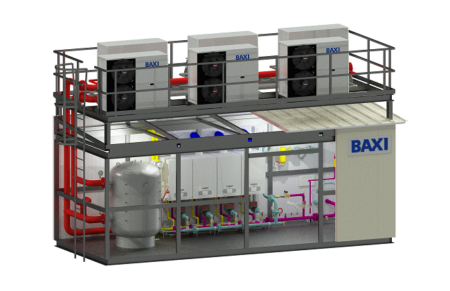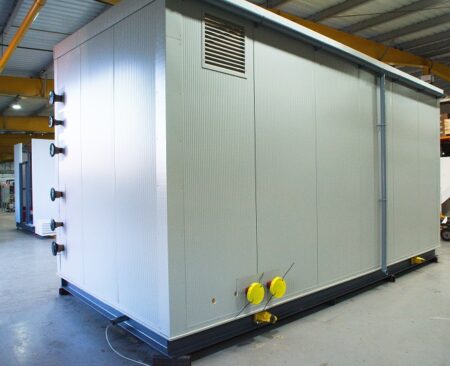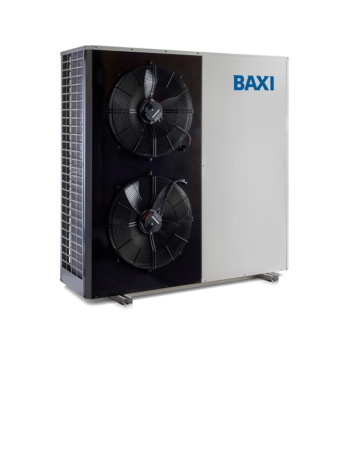Setting roadmaps to net zero
Decarbonising heat across all sectors, including educational establishments, is central to the Government’s net-zero strategy for 2050. But, while retrofitting existing schools to low carbon is perfectly possible, there can be challenges. Neville Radford, national education sector manager at Baxi, looks at some of the opportunities to achieve more-sustainable heating

Sustainability is high on the agenda for education projects
Sustainability is high on the school agenda with the Department for Education requiring all schools to have a dedicated net zero lead and a climate change plan in place by this year.
Enthusiasm to reduce the environmental impact of their buildings, and to lead by example, is evident among school leaders, but to date progress remains slow.
According to the latest government figures, the educational estate accounts for 36% of total UK public sector building emissions.
And, with MPs cautioning that only 20% of England’s school estates will be net zero compliant by 2050, it’s clear that action is needed – and fast.
As heat is usually the largest and most-expensive energy consumer in schools, the system is an obvious target for energy, carbon, and cost savings.
But the task is not without its challenges.
While new-build schools will be designed for net zero, refurbishing our ageing school stock can be more complex.
First, the scale: England alone has more than 24,000 schools (excluding nurseries), most of which still rely on gas boilers for heat.
And the limited timeframe in which to carry out the works brings an added constraint, as major refurbishments to the heating system are still traditionally carried out during the fixed window of opportunity in the summer holidays.
With budgets notoriously tight, affordability is a major concern for most schools, who may prefer to allocate the funds elsewhere.
To achieve optimal outcomes, we need to think holistically: spending the entire budget on a heat pump to decarbonise a draughty old building without any other preparation will not necessarily guarantee success
Finally, the perceived risk factor associated with decarbonisation can make it feel daunting and overly technical for those outside of the heating industry.
Identifying the solutions that offer the most-beneficial operational outcomes for schools, while moving towards long-term sustainability goals, will therefore be key.
So, with that in mind, let’s consider some of the achievable options available to schools to set them on their net zero journey.

Prefabricated heating solutions bring multiple benefits – from improved quality assurance and efficiency to reduced on-site installation time and disruption
Going all-electric
Ultimately, the goal is to move to an all-electric heating system, which typically involves replacing existing gas boilers with heat pump technology.
Heat pumps can provide a highly-efficient, sustainable method of supplying low-carbon heating or hot water requirements.
However, to achieve optimal outcomes, we need to think holistically: spending the entire budget on a heat pump to decarbonise a draughty old building without any other preparation will not necessarily guarantee success.
It’s important, therefore, to start with an understanding of where, and how, energy is used within the building.
The perceived risk factor associated with decarbonisation can make it feel daunting and overly technical for those outside of the heating industry
Even with high-temperature heat pumps, the aim should be to reduce energy usage and heat losses wherever possible as this will lower the capacity of heating plant required.
This, in turn, will reduce capital expenditure and installation costs while operating costs will also fall as the heat pumps will run more efficiently.
Examples might include fitting more-energy-efficient windows and doors, roof, and wall insulation or draughtproofing.
When considering an all-electric approach, we advise running through the following checklist.
Is there sufficient electrical capacity and space for the new ASHPs to be installed? Does your budget allow for 100% of the required heating power to be via ASHPs? Have you considered any factors to offset the potential higher running costs from increased electricity usage, such as solar PV?
Where necessary, applications to the Distribution Network Operator (DNO) should be made at the early stages so the electrical infrastructure suitability can be assessed for the increased electrical load requirements. This will help keep the project on track.

The packaged plant room is fabricated offsite in a quality-controlled factory environment
Hybrid systems
In harder-to-treat school buildings where fabric upgrades are not an option, perhaps due to listed status or cost implications, a hybrid approach might be a more-financially and technically-viable solution.
Introducing a system that combines air source heat pumps with existing heating infrastructure is nearly always a fast, affordable, and efficient solution in schools with complex refurbishment challenges.
Even a modestly-sized heat pump will be able to decarbonise a large portion of the heat in the building. And, while this approach would leave some reliance on gas boilers, these can be swapped out at a later stage to achieve full decarbonisation.
Cost plans
It’s often said that there is no silver bullet to decarbonising heat, but rather many different options.
To help you choose the most-appropriate solution, experienced solutions providers like Baxi can use existing energy data from your building to engineer a series of options, complete with simulated energy, carbon, capital, and operational expenditure.
This can be hugely beneficial as understanding the full implications of the design at the outset will help avoid any unexpected surprises further down the line.
An accurate cost plan will make any funding applications more straightforward and remove the risk of underestimating the total amount required
Once you have identified the most-appropriate solution, a detailed cost plan should then be put in place and any funding options assessed.
Again, heat experts will be able to offer support in this area.
An accurate cost plan will make any funding applications more straightforward and remove the risk of underestimating the total amount required.
The more detailed the plan, the more likely that the solution will perform as intended.

Heat pumps can provide a highly-efficient sustainable method of supplying low-carbon heating or hot water
Decarbonising at scale
Another option, particularly when refurbishing multiple school buildings, might be to consider use of prefabrication.
Prefabricated heating solutions bring multiple benefits – from improved quality assurance and efficiency to reduced on-site installation time and disruption.
Crucially, prefabrication also offers the ability to develop standardised, customisable heating solutions that could help accelerate heat pump retrofit.
What do we mean by this?
One solution might be to develop an offsite fabricated packaged plant room containing a combination of plant and accessory modules such as water to water (booster) heat pumps, boilers, pressurisation units, expansion vessels, buffer vessels, circulating pumps, and pipework in a standardised layout. This would be connected to external ASHPs or evaporators connected to split-system heat pumps within the plant room, with capacity easily adjusted to meet the requirements of the different school buildings.
A reliable, effective heating system is central to achieving more-comfortable and conducive learning environments for students and teachers, lowering running costs, and driving change
Quality assurance is high as the process involves manufacturing to specification in a factory environment, using specialist machinery and under improved control procedures.
Pre-testing and commissioning help eliminate any perceived risk factor relating to decarbonisation.
And, with one point of contact for the whole system, the potential for delay is hugely reduced, helping keep the project on schedule by avoiding any last-minute hitches.
Production, delivery lead time, and material waste are reduced, maximising installation efficiency and sustainability.
In short, pre-engineering the solution offers schools the opportunity to scale up heat pump retrofit across their estate, with increased standardisation ultimately leading to lower costs.
Plotting pathways
When it comes to heating, efficiency and sustainability are not just desirable, but essential, goals for schools.
But 2050 net zero goals aside, a reliable, effective heating system is central to achieving more-comfortable and conducive learning environments for students and teachers, lowering running costs, and driving change.
By understanding the available options and techniques for more-sustainable heating, and the impacts of each, schools will be well placed to set their sustainability roadmap and truly lead by example.
